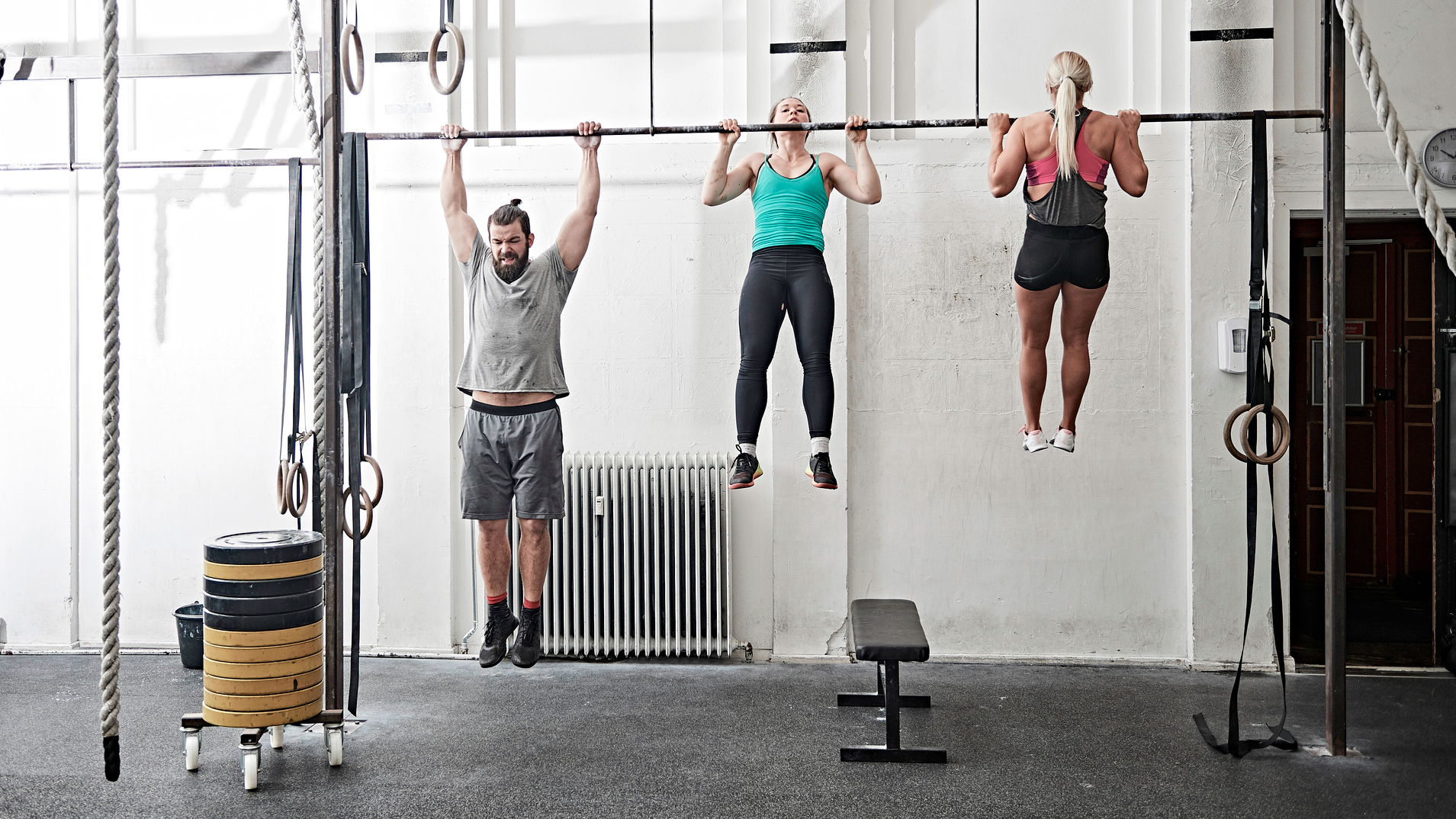The Best Exercises To Do On A Pull-Up Bar
Pull up a chair and see what this simple piece of workout equipment can do

If you’ve bought a pull-up bar and have been sticking to pull-ups and chin-ups, then we are about to transform your training. As well as the pulling collection of moves that bolster your back, build your biceps and turn your shoulders into boulders, a bar can be used for a demanding set of abs exercises. To start you off, here’s a list of the best pull-up bar exercises.
Best Pull-Up Bar Exercises
Dead hang
If you’re looking for a way to work up to pull-ups, then start with a dead hang. Grab the bar with an overhand grip – palms facing away – and see how long you can hold on for. This’ll do wonders for your grip strength, which you’ll need to develop if you’re eventually going to be completing multiple sets. If you can, raise yourself slightly so your arms aren’t completely locked out – this will help build strength in your biceps.
Negative pull-up
This is another great progression exercise to move you closer towards a full pull-up as well as a great grip strength exercise. Take either a wide overhand grip or a close underhand grip, and use a small platform or jump so you’re holding yourself at the top of the move with your chin at the same height as the bar. Then with as much control as possible, slowly lower until your arms are fully extended. The key to making progress with this move by doing it in a slow and controlled way.
Pull-up
The pull-up is a pretty singular exercise – there just isn’t much else like it. It’s a compound exercise that works most areas of your upper body, but its biggest benefit is in building you a strong back. Grasp the pull-up bar with your palms facing away from you and have your grip wider than shoulder-width apart. Pull yourself up until your chin is above the bar, then lower yourself slowly.
Chin-up
Done properly, chin-ups are an outstanding exercise for your biceps because you put those muscles through a full range of movement, which promotes better muscle growth. Grasp the bar with a close grip, palms facing towards you. When you get to the top, squeeze your biceps to encourage more growth.
Forearm pull-up
If you have forearm grips on your pull-up bar – so your palms are facing each other – use ’em. Your back and biceps still get worked, but it’s one of those rare exercises that develop your forearm strength. Improving that is an invaluable way to get better at any exercise that requires you to grip something, which is a lot of exercises.
Side-to-side pull-up
Turn the whole pull-up gig on its side and you get a great shoulders and biceps exercise. Grasp the pull-up bar from both sides, so your palms are facing opposite ways. Pull yourself up, moving to one side as you come to the top so one shoulder touches the bar. Lower slowly, then repeat but move to the other side as you rise. Keep changing sides each rep.
Get the Coach Newsletter
Sign up for workout ideas, training advice, reviews of the latest gear and more.
Around the world
This is one of the harder variations, but then going around the world isn’t easy. Holding the bar with hands wider than shoulder-width apart, move your body up in a semi-circle to the right and down to a semi-circle to the left. This will provide greater focus on each side’s shoulder, biceps and back muscles, as well as providing an extra challenge to your core – and that’s putting it mildly. Aim to do three or four going one way and then the same number of reps the other way.
Hanging knee raise
Hang from the bar using an overhand grip. Slowly bring your knees up until your thighs are at least parallel to the ground, then lower them again. The key to getting the most out of this move is to keep your movements slow and deliberate.
Garhammer raise
This move is essentially a hanging knee raise with a tweak, which results in your abs muscles being kept under tension throughout the entire set. Start with your knees raised so your thighs are horizontal, then bring your knees up to your chest and back down to the starting position. Since your legs remain raised, your abs don’t get the brief break between reps. Not for the faint-hearted.
Hanging leg raise
If you found the hanging knee raise tough, be warned, this ups the ante. Hang from the bar using an overhand grip. Keeping your legs extended and together, raise them until they are parallel to the ground. Lower slowly. If you’re flagging during a set, remember there’s no shame in switching back to the knee raise for the final few reps.
Windscreen wipers
Another abs exercise, but one that’s slightly less taxing than the hanging leg raise, is windscreen wipers. Hang from the pull-up bar with your arms fully extended and legs together. Bring your knees to your chest, then sweep them from side to side in an arc.
Hanging bicycles
Bicycle crunches are hard, but everything is harder hanging from a bar. Use an overhand grip, hands shoulder-width apart, and hang with your arms fully extended. Slowly drive one knee at a time towards your chest, kicking out as you lower. As one leg goes down, the other should balance this by coming up. Continue to pedal away either for reps or for time. An interesting game you can try is doing hanging bicycles until either your abs or arms gives out. Run a book among your fellow gym-goers as to which it’ll be. Go on, it’s fun.
Toes to bar
One of the hardest abs exercises going, toes to bar isn’t one to take lightly. Use a forearm grip and ensure your body is rigid and still. Keeping your legs straight, raise them to the bar where your hands are. Ideally, you’re going to raise your toes all the way up, but don’t fret if you can’t quite make it. The important part is lowering with control – if you can achieve this you’ll see progress fast.
Toes to bar and back again
If you want an upgrade on toes to bar, first of all, who are you? And second of all, good for you. Do ensure you can complete the toes to bar with perfect control before you add the extra bit.
Once your toes hit the bar, lower with control but stop when you get to 45°. Raise them to the bar again before lowering to the ground. To finish the move, pause for applause.

Jake was formely an intern for Coach and now contributes workouts from some of London’s top trainers. As well as training in the gym and running, he’s competed in the eight-hours-long overnight event Europe's Toughest Mudder twice and the 24-hours-long World's Toughest Mudder once.









